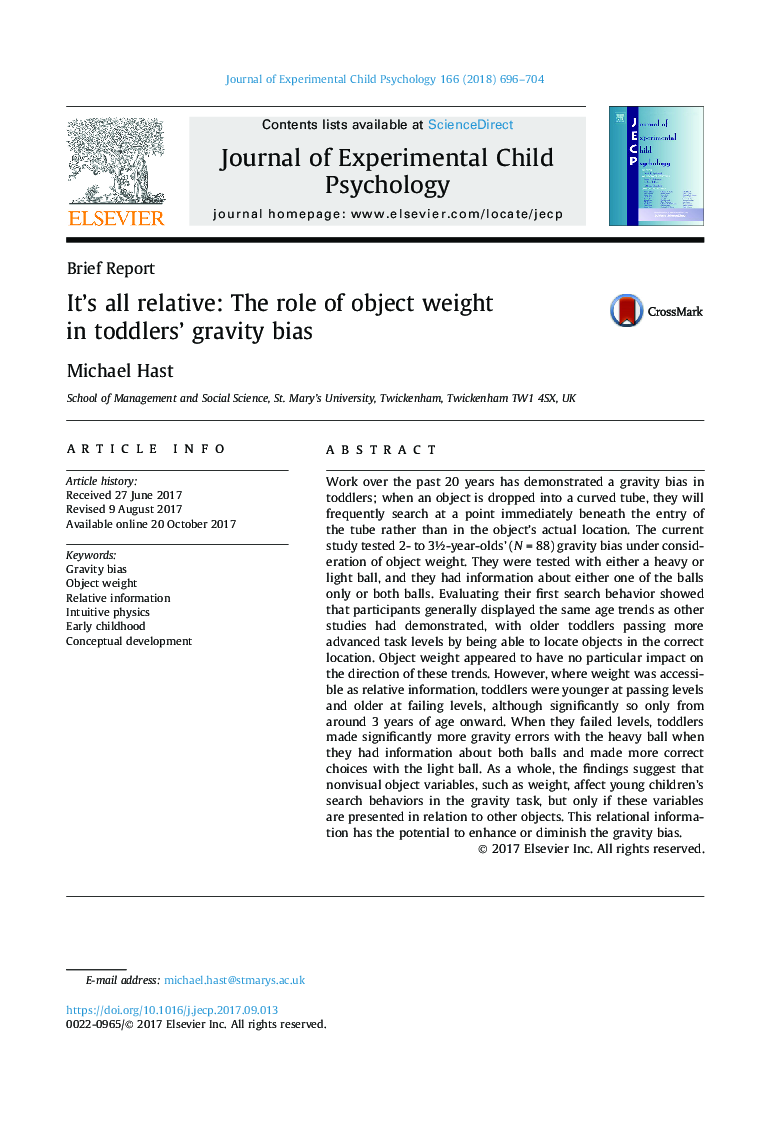| Article ID | Journal | Published Year | Pages | File Type |
|---|---|---|---|---|
| 7274294 | Journal of Experimental Child Psychology | 2018 | 9 Pages |
Abstract
Work over the past 20 years has demonstrated a gravity bias in toddlers; when an object is dropped into a curved tube, they will frequently search at a point immediately beneath the entry of the tube rather than in the object's actual location. The current study tested 2- to 3½-year-olds' (Nâ¯=â¯88) gravity bias under consideration of object weight. They were tested with either a heavy or light ball, and they had information about either one of the balls only or both balls. Evaluating their first search behavior showed that participants generally displayed the same age trends as other studies had demonstrated, with older toddlers passing more advanced task levels by being able to locate objects in the correct location. Object weight appeared to have no particular impact on the direction of these trends. However, where weight was accessible as relative information, toddlers were younger at passing levels and older at failing levels, although significantly so only from around 3 years of age onward. When they failed levels, toddlers made significantly more gravity errors with the heavy ball when they had information about both balls and made more correct choices with the light ball. As a whole, the findings suggest that nonvisual object variables, such as weight, affect young children's search behaviors in the gravity task, but only if these variables are presented in relation to other objects. This relational information has the potential to enhance or diminish the gravity bias.
Related Topics
Social Sciences and Humanities
Psychology
Developmental and Educational Psychology
Authors
Michael Hast,
